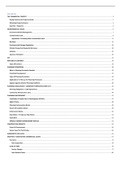Summary
Summary LPC Notes - Advanced Real Estate Elective - Exam-Ready Notes (ULaw)
- Module
- Advanced Real Estate (ARE)
- Institution
- University Of Law (ULaw)
Notes covering the 9 workshops on the Advanced Real Estate course on the LPC at ULaw!
[Show more]



